The integration of Artificial Intelligence (AI) into software development, often referred to as ‘AI in software development,’ has become not just a trend but a necessity for staying competitive. This integration of artificial intelligence in software development is transforming the way software engineers approach their work.
However, harnessing the potential of AI requires a deep understanding of its implications, benefits, and challenges. In this article, we’ll explore what software companies should understand about AI use to design, develop, document, deliver, and debug software.
Understanding Artificial Intelligence (AI) in Software Development
Artificial Intelligence (AI) is a broad field of computer science that aims to create machines or systems that can perform tasks that typically require human intelligence. These tasks include learning, reasoning, problem-solving, perception, and language understanding. AI systems are designed to mimic human cognitive functions and adapt to new situations or information.
Nuances Within the AI Scope
Now, a next lair of complexity. There are two concepts you have probably heard of, but may need clarification on:
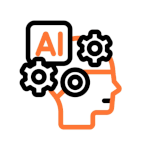 Machine Learning (ML) is a subset of AI that focuses on the development of algorithms and models that enable computers to learn from and make predictions or decisions based on data. ML algorithms can improve their performance over time without being explicitly programmed, making them essential for tasks such as pattern recognition, classification, regression, and clustering.
Machine Learning (ML) is a subset of AI that focuses on the development of algorithms and models that enable computers to learn from and make predictions or decisions based on data. ML algorithms can improve their performance over time without being explicitly programmed, making them essential for tasks such as pattern recognition, classification, regression, and clustering.
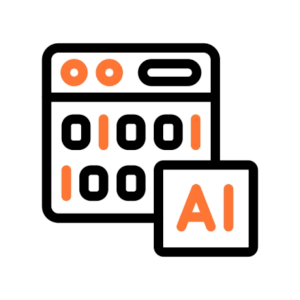 Deep Learning (DL) is a specialized subset of ML inspired by the structure and function of the human brain’s neural networks. DL algorithms, known as artificial neural networks, consist of multiple layers of interconnected nodes (neurons) that process data hierarchically. Deep Learning excels at handling large volumes of unstructured data, such as images, text, and audio, and has achieved remarkable success in tasks such as image recognition, natural language processing, and speech recognition.
Deep Learning (DL) is a specialized subset of ML inspired by the structure and function of the human brain’s neural networks. DL algorithms, known as artificial neural networks, consist of multiple layers of interconnected nodes (neurons) that process data hierarchically. Deep Learning excels at handling large volumes of unstructured data, such as images, text, and audio, and has achieved remarkable success in tasks such as image recognition, natural language processing, and speech recognition.
So how do they translate into the available types of AI and its uses? Well, that’s where the difference between Narrow AI and General AI comes in:
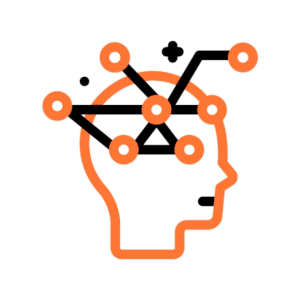 Narrow AI (Weak AI) refers to AI systems that are designed and trained for a specific task or set of tasks within a limited domain. These systems excel at performing well-defined tasks but lack the ability to generalize beyond their intended scope. Examples of narrow AI include virtual assistants like Siri or Alexa, recommendation systems, and image recognition algorithms.
Narrow AI (Weak AI) refers to AI systems that are designed and trained for a specific task or set of tasks within a limited domain. These systems excel at performing well-defined tasks but lack the ability to generalize beyond their intended scope. Examples of narrow AI include virtual assistants like Siri or Alexa, recommendation systems, and image recognition algorithms.
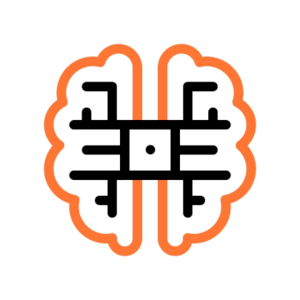 Strong AI, also known as General AI or Artificial General Intelligence (AGI) refers to AI systems with human-level intelligence and cognitive abilities. General AI would possess the capacity to understand, learn, and apply knowledge across a wide range of tasks and domains, similar to human intelligence. Unlike narrow AI, which is specialized in narrow domains, general AI would exhibit versatility and adaptability akin to human intelligence.
Strong AI, also known as General AI or Artificial General Intelligence (AGI) refers to AI systems with human-level intelligence and cognitive abilities. General AI would possess the capacity to understand, learn, and apply knowledge across a wide range of tasks and domains, similar to human intelligence. Unlike narrow AI, which is specialized in narrow domains, general AI would exhibit versatility and adaptability akin to human intelligence.
However, achieving true general AI remains a significant challenge in AI research, and no such system exists to date. It’s a goal the international community is working toward.
How Will the SDLC Change From Here On?
Here’s how AI can be utilized in each stage of the Software Development Life Cycle (SDLC):
Planning
Analyzing historical project data, user feedback, and market trends to assist in project planning and requirement gathering. It can help identify potential risks, estimate project timelines more accurately, and prioritize features based on user needs and business objectives.
Analysis
Extracting insights from large datasets, user feedback, and market research to inform the design and development process. Natural Language Processing (NLP) algorithms can parse user requirements and convert them into actionable tasks or user stories, facilitating better understanding and communication among stakeholders.
Design
Generating design prototypes, user interfaces, and layouts based on user preferences, accessibility guidelines, and design principles. Generative Design algorithms can explore numerous design options and optimize designs for various criteria such as usability, aesthetics, and performance.
Development
Automating code generation, refactor legacy code, and identify potential bugs or vulnerabilities through static code analysis and pattern recognition. Machine Learning algorithms can assist developers in writing more efficient and maintainable code by providing code suggestions, fixing syntax errors, and optimizing algorithms.
Testing
Automating test case generation, execution, and result analysis, reducing manual effort and improving test coverage. AI algorithms can identify high-risk areas of the codebase, prioritize test cases, and predict potential failure points based on historical data and code changes.
Deployment
Optimizing deployment processes by automating deployment pipelines, orchestrating containerized applications, and predicting infrastructure scaling requirements based on user demand and resource usage patterns. AI-driven Continuous Integration/Continuous Deployment (CI/CD) pipelines can detect and rollback faulty deployments, ensuring seamless and reliable software releases.
Maintenance
Optimizing deployment processes by automating deployment pipelines, orchestrating containerized applications, and predicting infrastructure scaling requirements based on user demand and resource usage patterns. AI-driven Continuous Integration/Continuous Deployment (CI/CD) pipelines can detect and rollback faulty deployments, ensuring seamless and reliable software releases.
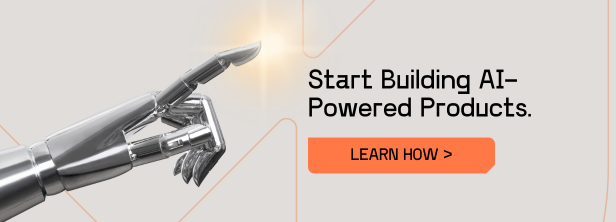
Pros and Cons of AI Use by Software Companies
Software companies have already begun integrating AI into various aspects of software development to enhance efficiency, improve user experiences, and innovate their products.
One prominent application is in automated code generation and optimization, where AI algorithms analyze code patterns, identify inefficiencies, and suggest improvements or generate code snippets automatically.
This streamlines the development process, reduces manual effort, and helps developers write cleaner, more efficient code. Additionally, AI-powered testing and debugging tools can automatically detect and fix software bugs, speeding up the debugging process and improving software quality.
These AI-driven approaches, such as AI integration in software development, not only save time and resources but also enable software companies to deliver more robust and reliable products to their customers. Software engineers are increasingly relying on AI technologies to streamline their workflows and enhance product quality. So what are the risks?
Pros:
- Efficiency: AI-powered automation streamlines development processes, reducing time-to-market and costs.
- Personalization: AI enables software to adapt to individual user preferences, enhancing user experience and engagement.
- Insights: AI analytics provide valuable insights from data, guiding informed decision-making and product optimization.
- Innovation: AI fosters innovation by enabling the development of advanced features and functionalities.
- Competitive Advantage: Companies leveraging AI gain a competitive edge by offering cutting-edge products and services.
Cons:
- Data Dependency: AI performance relies heavily on the quality and quantity of training data, which can be challenging to acquire and maintain.
- Ethical Concerns: AI algorithms may perpetuate biases or privacy violations if not properly regulated and monitored.
- Complexity: Implementing AI requires specialized skills and resources, posing challenges for smaller companies with limited expertise.
- Security Risks: AI systems are vulnerable to cyberattacks and adversarial manipulation, requiring robust security measures.
- Lack of Transparency: AI decision-making processes may lack transparency, raising concerns about accountability and trustworthiness.
Opportunities for AI Use in Different Software Industries
Education Technology
AI-powered adaptive learning platforms personalize educational experiences, analyze student performance, and provide real-time feedback to enhance learning outcomes. Possible uses of AI by Edtech companies are:
- Building Personalized Learning for Students. AI-rich software products can enable content customization to ensure accessibility and engagement, offering various formats and study aids.
- Empowering Educators With Efficient Teaching Tools. Automated grading, early identification of at-risk students, and advance analytics enable proactive support.
- Administrative Support for Institutions. Predictive analytics and data-driven decision-making help forecast enrollment trends, identify areas for improvement, and where to allocate resources.
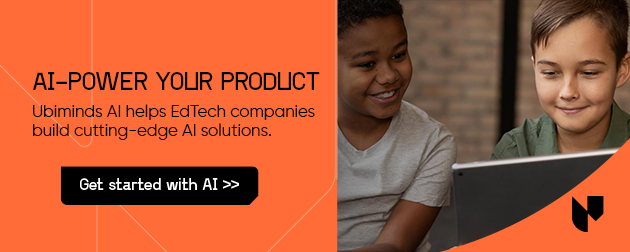
Financial Technology
AI algorithms detect fraudulent activities, optimize investment strategies, automate financial operations, and offer personalized financial advice to customers. AI can play a crucial role in the FinTech sector by:
- Keeping Money Safe. Detecting fraudulent activities with advanced algorithms, ensuring security and trust in financial transactions.
- Telling Users Where to Invest. Optimizing investment strategies by analyzing vast amounts of data and identifying profitable opportunities. It can offer personalized financial advice to customers based on their financial goals, risk tolerance, and spending patterns.
- Making Things Easier. Automating financial operations, streamlining processes, and reducing operational costs.
Health Technology
AI-enabled diagnostic tools, predictive analytics, and personalized treatment recommendations revolutionize healthcare delivery, improving patient outcomes and reducing costs. AI is transforming the Medicine and Health Tech industry by:
- Flagging Warning Signs. Providing predictive analytics to forecast disease outbreaks, optimize resource allocation, and improve healthcare delivery.
- Reducing Misdiagnosis. Enabling diagnostic tools to accurately detect diseases and conditions at an early stage, leading to timely interventions and improved patient outcomes.
- Supporting Convalescence. Offering personalized treatment recommendations based on individual patient data, medical history, and genetic information, ensuring tailored and effective care.
Marketplace
AI-driven recommendation engines, dynamic pricing algorithms, and chatbots enhance user engagement, facilitate transactions, and optimize marketplace operations. It’s reshaping marketplace software by:
- Telling People What to Buy. Powering recommendation engines that analyze user behavior and preferences to provide personalized product recommendations, enhancing user engagement and satisfaction.
- Adjusting to Offer and Demand. Implementing dynamic pricing algorithms that adjust prices based on demand, competition, and other factors, maximizing revenue and profitability.
- Improving UX. Utilizing chatbots for customer support, sales assistance, and order tracking, improving user experience and facilitating seamless transactions.
Blockchain
AI enhances blockchain scalability, security, and interoperability, enabling innovative applications such as smart contracts, decentralized finance (DeFi), and supply chain management. AI complements distributed ledger technology by:
- Future-proofing Growth Opportunities. Enhancing blockchain scalability by optimizing network performance, improving transaction speed, and reducing processing costs.
- Keeping Data Safe. Bolstering security through AI-powered threat detection and prevention mechanisms, safeguarding against cyberattacks and data breaches.
- Allowing Stronger Integration. Improving interoperability between different blockchain platforms and networks, enabling seamless data exchange and integration across decentralized applications.
These applications demonstrate the versatility and transformative potential of AI across various industries, driving innovation, efficiency, and value creation.
The Power of People in AI-Powered Software Development
While Artificial Intelligence (AI) holds tremendous potential to transform software development, it’s essential to recognize that the success of AI initiatives ultimately depends on the people behind them. Software companies need the right mix of skilled professionals to harness the full capabilities of AI and drive meaningful outcomes. From data scientists and machine learning engineers to software developers and domain experts, every team member plays a crucial role in shaping AI-powered solutions.
How Ubiminds Can Help
At Ubiminds, we understand the critical importance of having the right talent to power AI-driven software development. Our team comprises seasoned professionals with expertise in AI, machine learning, software engineering, and domain-specific knowledge across various industries.
Whether you’re looking to integrate AI into your products, optimize processes, or unlock new opportunities, we have the expertise and experience to support your journey. Let Ubiminds be your partner in realizing the full potential of AI in software development by filling the form below.
With the right people and expertise in place, software companies can effectively leverage AI to drive innovation, efficiency, and growth in the ever-evolving digital landscape.
FAQ on How AI Changes Software Development
In conclusion, AI presents immense opportunities for software companies to innovate, optimize processes, and deliver value-added products across various industries. By understanding the nuances of AI integration, addressing potential challenges, and adhering to ethical principles, software companies can unlock the full potential of AI to drive growth and success in the digital age.

International Marketing Leader, specialized in tech. Proud to have built marketing and business generation structures for some of the fastest-growing SaaS companies on both sides of the Atlantic (UK, DACH, Iberia, LatAm, and NorthAm). Big fan of motherhood, world music, marketing, and backpacking. A little bit nerdy too!






